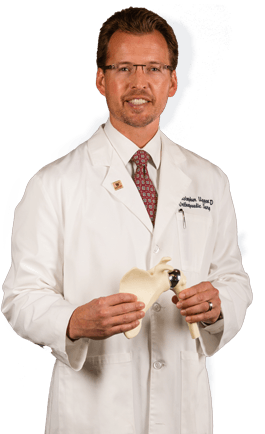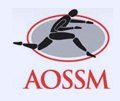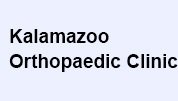Shoulder
Conditions
Rotator Cuff Tear
The rotator cuff is a group of four muscle tendon units in the shoulder joint that cover and support the shoulder joint and rotate the arm. A tear in the rotator cuff is one of the most common causes of shoulder pain in middle aged adults and older individuals. It may occur with repetitive movements while working or playing sports, during motor accidents, lifting a heavy object or a fall on an outstretched arm. As aging occurs, bone spurs may develop and can damage tendon tissue causing tears.
Shoulder Instability
Shoulder instability is a chronic condition that causes frequent dislocations of the shoulder joint. A dislocation occurs when the end of the humerus (the ball portion) partially or completely dislocates from the glenoid (the socket portion) of the shoulder. A partial dislocation is referred to as a subluxation, whereas a complete separation is referred to as a dislocation.
Shoulder Impingement
Various supporting structures aid in the smooth movement of the shoulder joint. The joint is held together and stabilized by a group of tendons called the rotator cuff. A fluid-filled sac called a bursa, located above the rotator cuff, helps in the frictionless movement of the shoulder. Shoulder impingement is one of the most common causes of pain in the adult shoulder.
Shoulder Injuries in the Throwing Athlete
Shoulder injuries in baseball players are usually associated with pitching. While this overhand throwing activity can produce great speed and distance for the ball, when performed repeatedly, it can place a lot of stress on the shoulder.
Shoulder Separation
Acromioclavicular joint (AC joint) dislocation or shoulder separation is one of the most common injuries of the upper arm. It involves separation of the AC joint and injury to the ligaments that support the joint. The AC joint forms where the clavicle (collarbone) meets the shoulder blade (acromion).
Shoulder Trauma (Fractures and Dislocations)
The shoulder joint is a ball and socket joint. A ‘ball’ at the top of the upper arm bone (the humerus) fits neatly into a ‘socket’, called the glenoid, which is part of the shoulder blade (scapula). The labrum is a ring of fibrous cartilage surrounding the glenoid for stabilization of the shoulder joint. The biceps tendon attaches inside the shoulder joint at the superior labrum of the shoulder joint. The biceps tendon is a long cord-like structure which attaches the biceps muscle to the shoulder and helps to stabilize the joint.
Shoulder Arthritis (Glenohumeral and AC Arthritis)
The shoulder is a 'ball-and-socket' joint. The shoulder joint is also called as glenohumeral joint, the joint formed by glenoid and humerus bones. The shoulder joint is formed when a 'ball' at the top of the upper arm bone, humerus, fits neatly into a 'socket', the glenoid, which is part of the shoulder blade.
Labrum Tear (SLAP, Bankart)
The shoulder joint is a ball and socket joint. A 'ball' at the top of the upper arm bone (the humerus) fits neatly into a 'socket', called the glenoid, which is part of the shoulder blade (scapula). The term SLAP (superior –labrum anterior-posterior) lesion or SLAP tear refers to an injury of the superior labrum of the shoulder. The labrum is a ring of fibrous cartilage surrounding the glenoid for stabilization of the shoulder joint. The biceps tendon attaches inside the shoulder joint at the superior labrum of the shoulder joint. The biceps tendon is a long cord-like structure which attaches the biceps muscle to the shoulder and helps to stabilize the joint.
Procedures
Shoulder Arthroscopy
Arthroscopy is a minimally invasive diagnostic and surgical procedure performed for joint problems. Shoulder arthroscopy is performed using a pencil-sized instrument called an Arthroscope. The arthroscope consists of a light system and camera to project images to a computer screen for your surgeon to view the surgical site. Arthroscopy is used to treat disease conditions and injuries involving the bones, cartilage, tendons, ligaments, and muscles of the shoulder joint.
Rotator Cuff Repair
The rotator cuff is the group of four muscle tendon units in the shoulder joint providing support and enabling wider range of motion. Major injury to these tendons may result in tear of these tendons and the condition is called a rotator cuff tear. It is one of the most common causes of shoulder pain in middle-aged adults and older individuals. It may occur with repeated use of the arm for overhead activities, while playing sports, or during motor vehicle accidents.
Shoulder Stabilization
Shoulder instability is a chronic condition that causes frequent dislocations of the shoulder joint. A dislocation occurs when the end of the humerus (the ball portion) partially or completely dislocates from the glenoid (the socket portion) of the shoulder. A partial dislocation is referred to as a subluxation whereas a complete separation is referred to as a dislocation. The repeated dislocation of the humerus out of its socket is called chronic shoulder instability. A tear in the labrum and ligament in the front of the shoulder (Bankart lesion) or rotator cuff tear may lead to repeated shoulder dislocations.
Shoulder Replacement
The shoulder is a highly movable body joint that allows various movements of the arm. It is a ball and socket joint, where the head of the humerus (upper arm bone) articulates with the socket of the scapula (shoulder blade) called the glenoid. The two articulating surfaces of the bones are covered with cartilage, which prevents friction between the moving bones. The cartilage is lubricated by synovial fluid. Tendons and ligaments around the shoulder joint provide strength and stability to the joint.
Reverse Total Shoulder Replacement
Reverse total shoulder replacement, is an advanced surgical technique specifically designed for rotator cuff tear arthropathy, a condition where the patient suffers from both shoulder arthritis and a rotator cuff tear.
Latarjet and Remplissage
The shoulder joint provides a wide range of movement to the upper extremity but overuse or trauma can cause instability to the joint. The Latarjet procedure is a surgical procedure performed to treat shoulder instability by relocating a piece of bone with an attached tendon to the shoulder joint.













